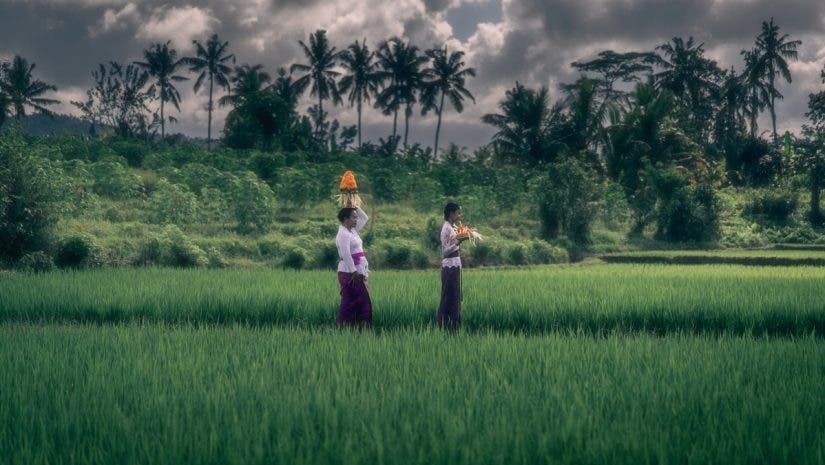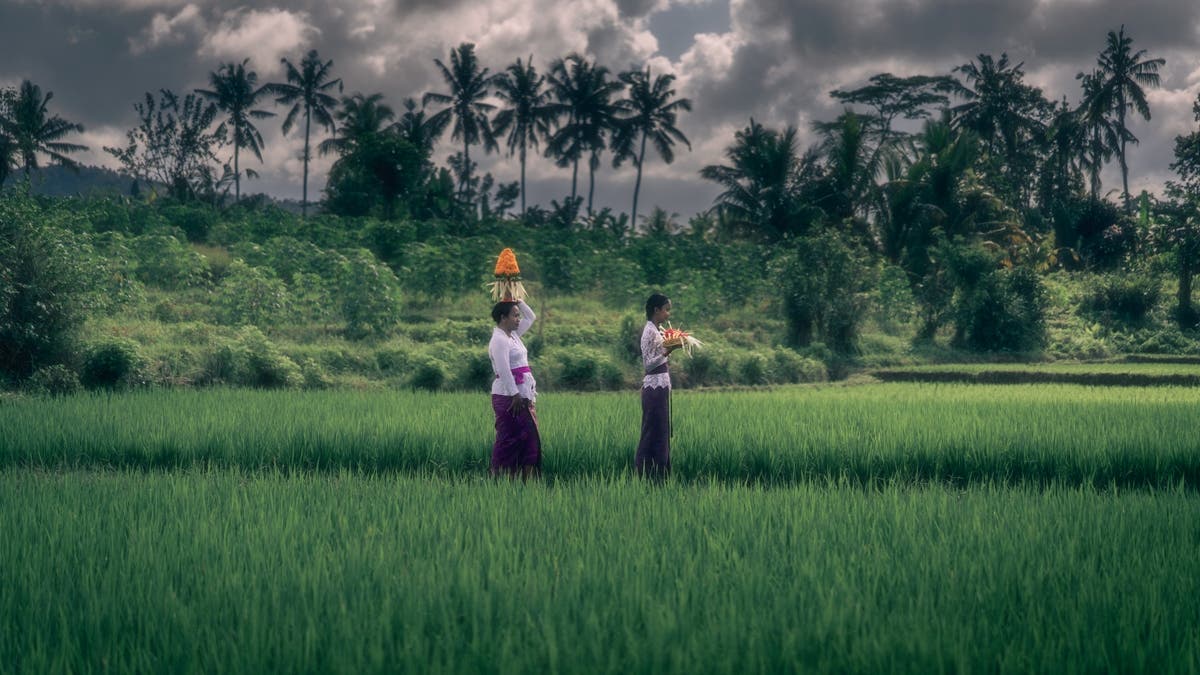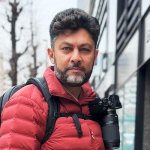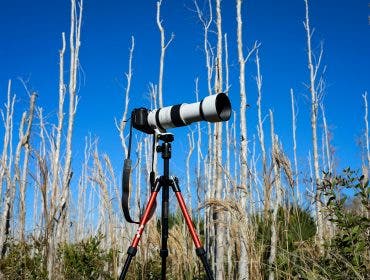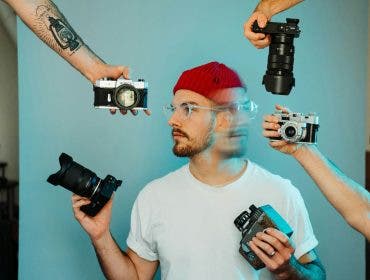“Satu! Dua! Tiga!” our shoot organiser, Yudha, shouted one, two, three out loud in Indonesian. A rapid-fire of camera shutters followed, capturing the intricate movements of a Balinese Legong dance being performed before a pristine waterfall. The evening before, my friend Anton had informed me he had arranged a paid shoot with these dancers. He knew that the sun would rise behind the mountain, and with the addition of a fog machine for ambience, the resulting photos could be promising. Our hour-long session involved photographing the performers’ choreographed movements from different angles and positions, taking breaks, and capturing individual poses. This type of pre-planned and staged photography is known as a conceptual photoshoot, or simply concept photoshoots.
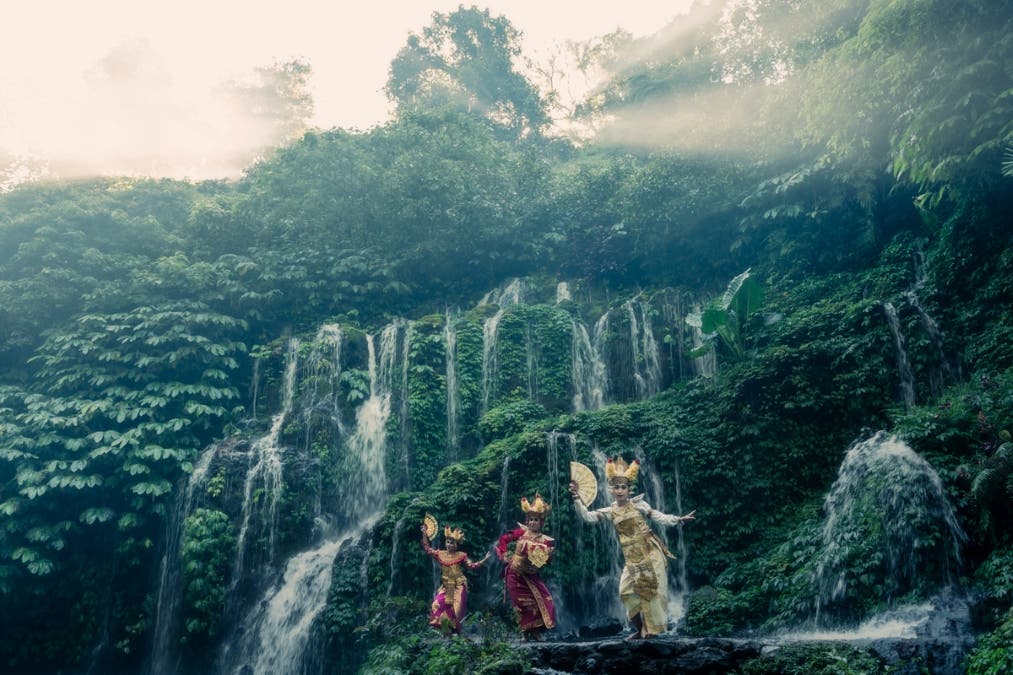
Conceptual photography conveys an idea, concept, or message that extends beyond the simple documentation of reality. It may originate from an abstract thought or emotion, or, as in this case, serve as a cultural showcase. The example of this shoot featuring Balinese dancers combines landscape photography and portraiture, illustrating an aspect of Indonesia’s vibrant culture.
Characteristics of a Conceptual Photo
Advancements in camera technology and editing software have fueled the art of self-expression through photography over the past decade. Coupled with the growth of social media platforms like Instagram, it has also driven the popularity of conceptual photography. A conceptual photograph has the following features:
- Idea driven: strong concept, message, emotion, or story.
- Planned and staged: planned, involving deliberate choices in scene design, props, locations, and subject direction.
- Symbolism: utilises symbols and visual allegories to convey abstract ideas.
- Provokes Thought and Emotion: engages viewers to interpret the image in a meaningful way.
- Editing: may use digital manipulation, such as compositing and colour grading, to make the resulting images look surreal.
Example: The thought-provoking image titled “Face Your Fears” below illustrates a concept photoshoot through its symbolic representation of a gigantic, translucent hand rising from the fog, facing a solitary figure. This intentionally crafted and digitally enhanced image captures the common experience of fear, representing the artist’s reflections on tackling anxieties and motivating others to do the same. Several photos were combined in Photoshop to achieve this result.
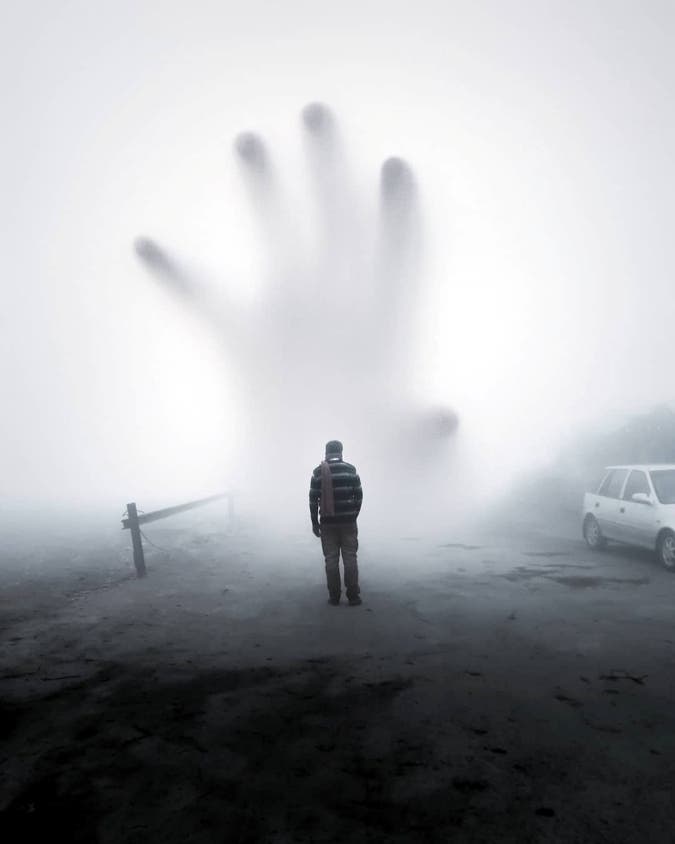
I have compiled some guidelines to help you with your next concept photoshoots. Note that some photos are cultural, and others are symbolic. However, all of them are staged and planned.
The birth of an idea:
Photographers are keen observers, deeply attuned to their surroundings and the emotions they evoke. Our lives and emotional journeys also inspire the narratives we capture. When thinking about how to improve photoshoots and their concepts, you must blend personal experiences with artistic vision. Here’s an example: during my corporate career, I found that my way of coping with stress was to listen to soothing rainforest music with waterfall sounds on my headphones. Although I still need to shoot the concept, I created an AI-generated image to reflect how I felt while listening to the sounds and how they inspired the idea I still want to implement. In summary, I derived the main idea from observation and emotion, and I realize it through planning, camera work, and editing skills, among other factors.
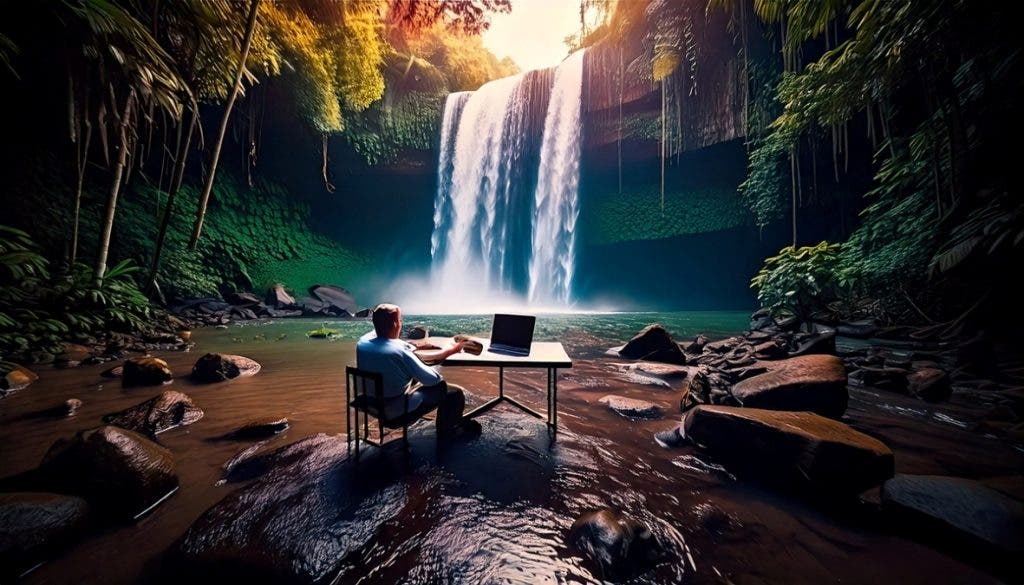
Preparation: The wardrobe, makeup and the location for the photoshoots
When planning for a concept photoshoot, it’s essential to choose attire that intentionally reflects the story or emotion you aim to convey. It’s not about fashion or what’s trending. Consider how different colours and textures can serve as a visual representation of your concept. Additionally, props and accessories play a crucial role in enriching your narrative: select items that convey your overall message. Be mindful of your chosen backdrop and environmental conditions when making your wardrobe selections to ensure that your look is deliberate but also practical for the setting.
During a photo expedition to a village in Indonesia, I explored the local rice paddies in search of photo opportunities. I came across a local fabric weaver in her shop, whom I enjoyed photographing. I had noticed local village women placing small baskets of flowers or fruit at tiny temples in almost every street. These separate observations led to the idea of arranging a photoshoot in the rice fields (my location), with women carrying flower and fruit baskets (the props), while wearing traditional dresses woven by local weavers (the wardrobe). It aimed to capture the colourful essence of village life and tradition, intertwined with the natural beauty of the countryside.
Examples
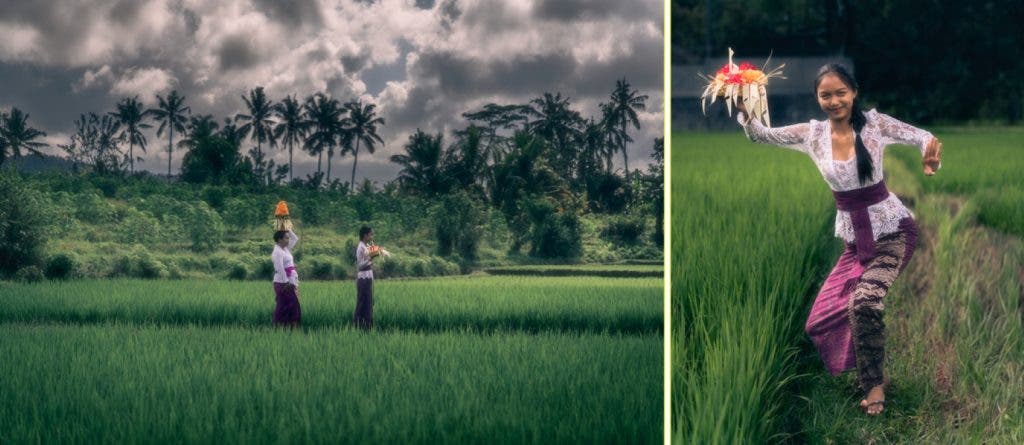
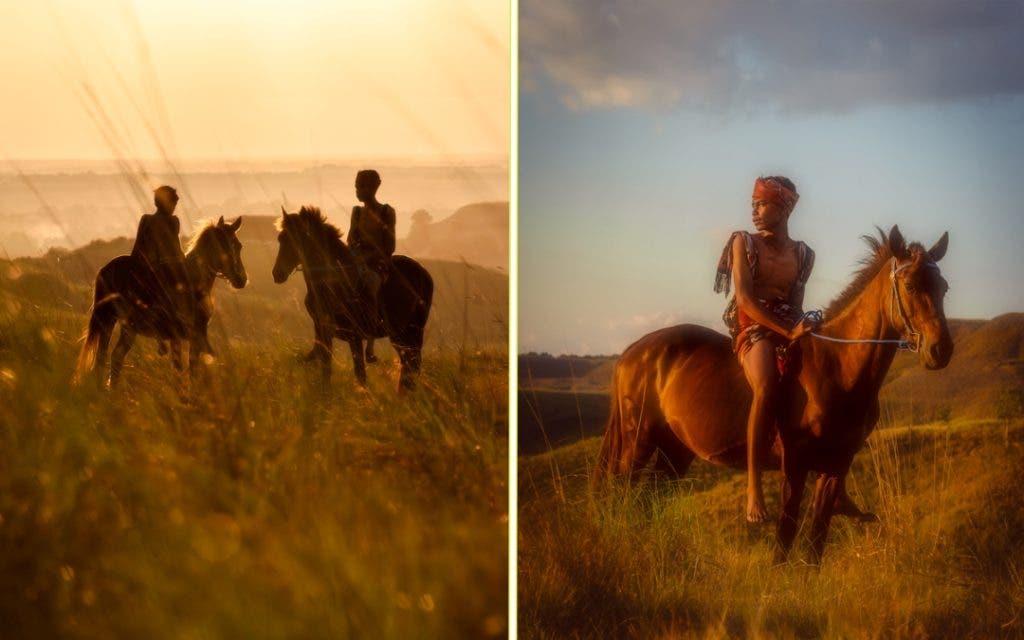
The image above also exemplifies the careful selection of location and shooting direction in the grasslands of Sumba, a remote island in Indonesia, featuring the native Sandalwood horses and local riders dressed in their traditional attire. From location to wardrobe to the timing of this shoot, everything was meticulously planned and staged.
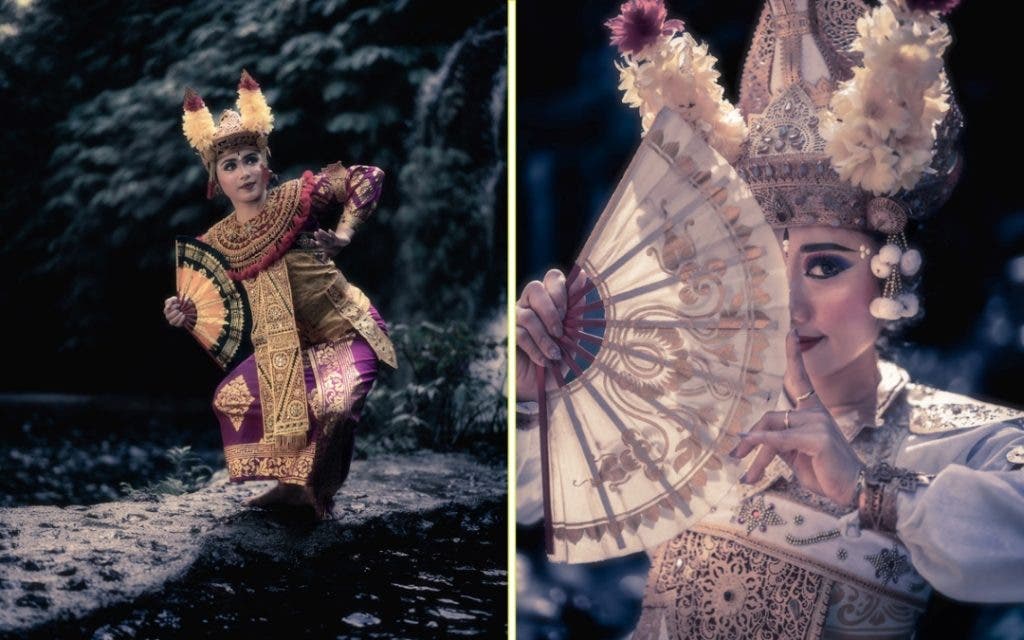
The concept photoshoot of the Legong dancers centred on the dancers, with the backdrop of the waterfall in a misty sunrise. My favourite images are those that capture an eye-to-eye connection with the artists up close. For that, makeup was crucial; the artists spent at least an hour preparing on location before our arrival. Without their distinctive makeup drawing us to their captivating expressions, the elaborate clothes and intricate poses alone would have failed to engage us.
Camera, lenses and post-processing skills
The equipment needed for any photoshoot is crucial in achieving desired outcomes. The gear list can be as simple as your current kit or as elaborate as hiring a smoke machine, flashguns, reflectors, flashlights, strobes, and diffusers. For the cultural style shoots I conducted in Indonesia, I used prime lenses, such as an 85mm f/1.4 for close-ups, and a zoom lens, like a 70-200mm f/2.8 telephoto, for other shots. The following photo, taken during a shoot with a fisherman, was captured using a telephoto lens.
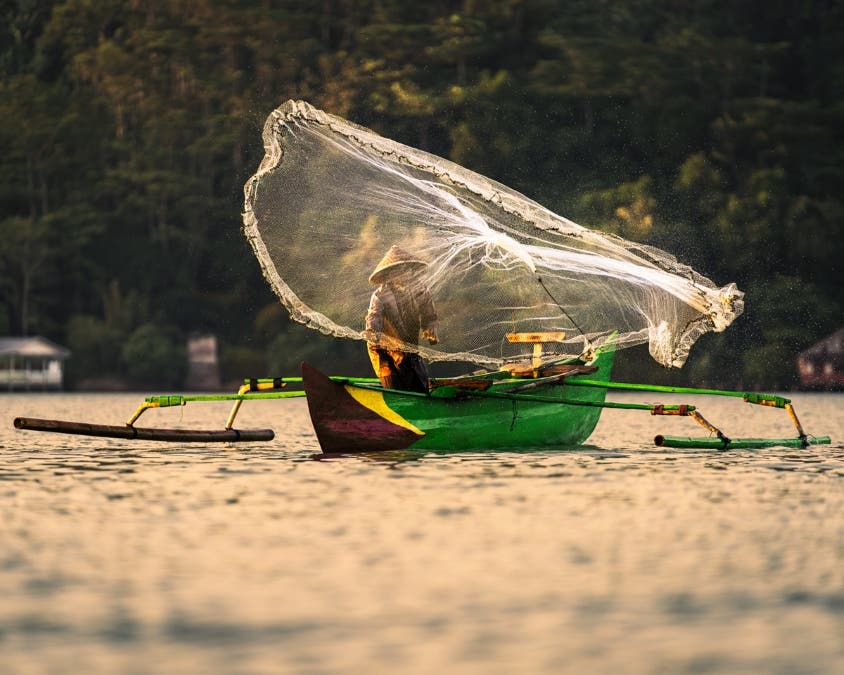
These photoshoots test your skills and add pressure on you as a creator due to the many factors that need to be considered and the collaborative effort involved; every part contributes to achieving the desired shot. However, as the photographer and photo editor, your role is to unify all elements through your post-processing expertise. This may involve more than simple edits, potentially requiring the combination of multiple photos to convey the intended message. In such cases, knowledge of tools like Adobe Photoshop is needed to create layers and masks. A strong understanding of colours and colour grading is also crucial to accurately reflect the envisioned mood.
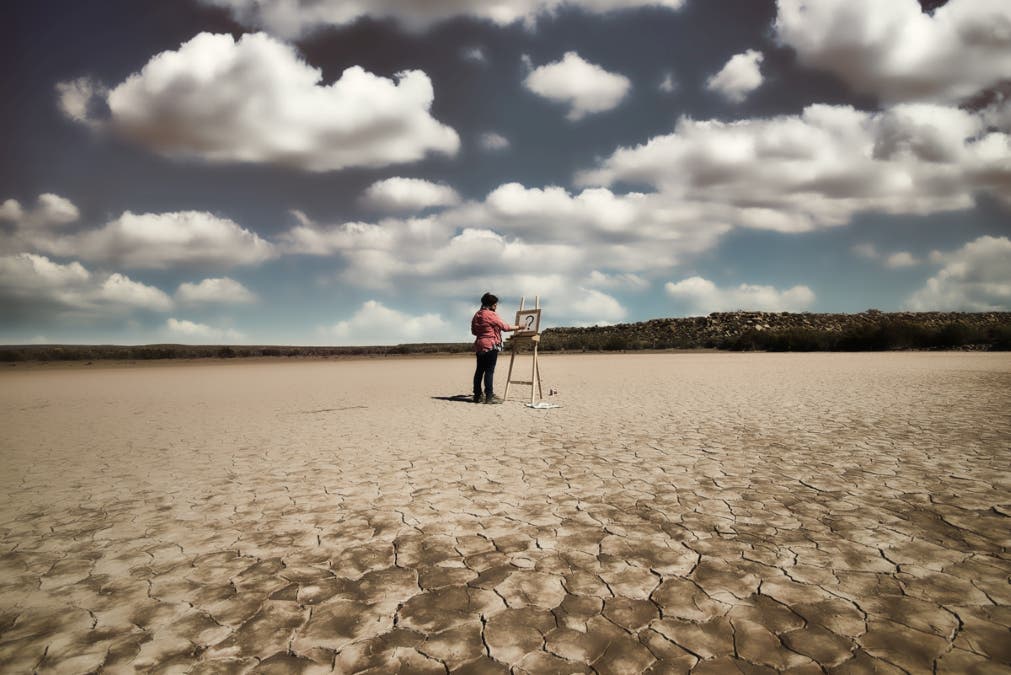
The image depicts a creative block, symbolised by cracked earth that reflects the artist’s “dried up” ideas. The prominent question mark on the canvas represents her questioning of artistic direction, serving as a visual metaphor for a creative drought. While the image of the artist was in reality taken on the dried lake, the sky was replaced, and a question mark was also added in Photoshop. The “painting-like” look and feel of the clouds was achieved in editing, which also took into consideration the palette of earthy browns and blues, as well as the lone figure’s hint of colour.
General guidelines for concept photoshoots

Whether you are a team member or in a leadership role during a shoot, keep the following in mind:
- Finding models or hiring them for photoshoots can typically be accomplished through local modelling agencies, travel guides, or professional photographers who have connections in the industry.
- The cultural conceptual photoshoots not only provide you with valuable content but also benefit the local economy and artists. Therefore, pay all participants involved in the shoot on time, as agreed.
- Being respectful of religious and cultural norms is crucial. This approach facilitates easier communication and creates a pleasant experience for everyone involved. Additionally, it helps maintain relationships for future collaborations and business opportunities, both for yourself and other photographers.
- Create a shot list in an Excel sheet or apps like Notion. Print the shot list if necessary and refer back to it during the shoot.
- Before you start the shoot, discuss your vision with the models and ensure that they understand it, so everyone is on the same page.
- Show gratitude at the end; it goes a long way.
Summary
The concept photoshoot embodies a culmination of elements and is arguably photography at its most creative. It merges vision, imagination, and symbolism with real-world components, all brought together to depict what you aim to represent artistically. It allows your creativity to have free rein, while immersing yourself in your subject. There is nothing not to enjoy!
